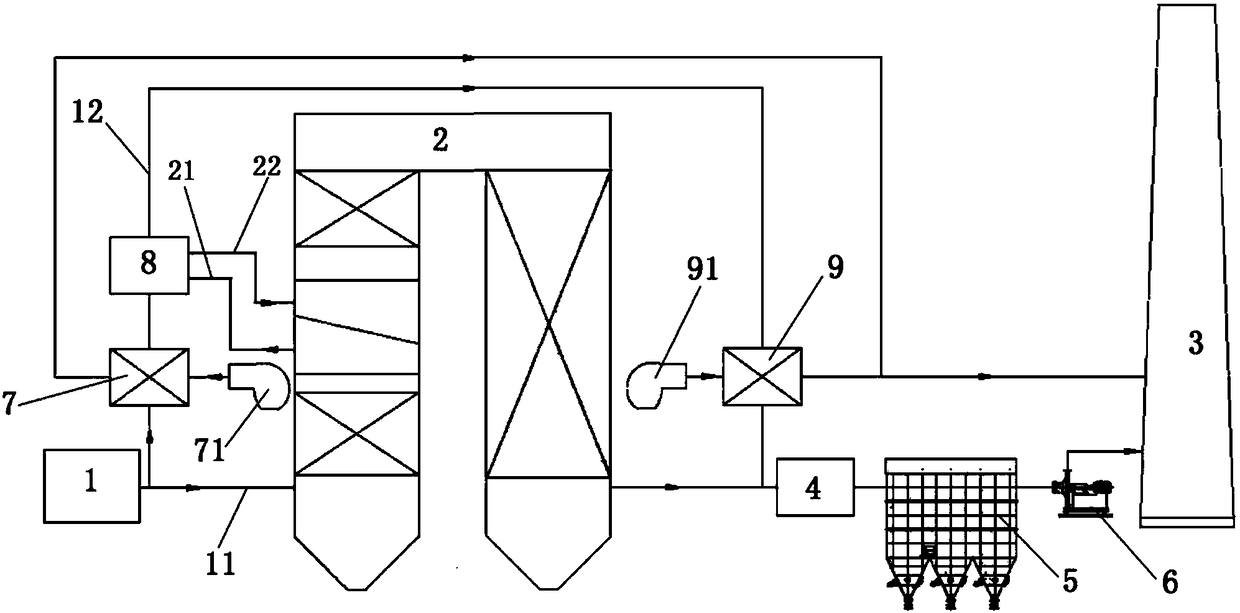Glass kiln flue gas bypass desulfurization and denitrification system
A flue gas bypass, desulfurization and denitrification technology, applied in the direction of furnace, furnace components, waste heat treatment, etc., can solve the problems of limited fan capacity, short service life, small heat transfer coefficient, etc., to achieve convenient cleaning and maintenance, fast and effective operation, The effect of improving the heat transfer coefficient
- Summary
- Abstract
- Description
- Claims
- Application Information
AI Technical Summary
Problems solved by technology
Method used
Image
Examples
Embodiment 1
[0010] Embodiment 1: refer to figure 1 and 2 . A glass kiln flue gas bypass desulfurization and denitrification system, including a glass kiln 1, a waste heat boiler 2, and a chimney 3. The main flue 11 of the glass kiln 1 and the chimney 3 are connected to a waste heat boiler 2, a desulfurization tower 4, and a dust removal system. device 5 and induced draft fan 6, the main flue 11 is connected with a side door flue 12, and the side door flue 12 is connected with a first flue gas cooler 7, a denitrification reactor 8, and a second flue gas cooler 9 in sequence, The flue cooled by the second flue gas desuperheater 9 is connected to the flue inlet of the desulfurization tower 4, and the heat exchange air inlet ports of the first flue gas desuperheater 7 and the second flue gas desuperheater 9 are respectively connected with the second flue gas desuperheater 9. The first air blower 71 and the second air blower 91 are respectively communicated with the chimney 3 through pipes a...
PUM
 Login to View More
Login to View More Abstract
Description
Claims
Application Information
 Login to View More
Login to View More - R&D
- Intellectual Property
- Life Sciences
- Materials
- Tech Scout
- Unparalleled Data Quality
- Higher Quality Content
- 60% Fewer Hallucinations
Browse by: Latest US Patents, China's latest patents, Technical Efficacy Thesaurus, Application Domain, Technology Topic, Popular Technical Reports.
© 2025 PatSnap. All rights reserved.Legal|Privacy policy|Modern Slavery Act Transparency Statement|Sitemap|About US| Contact US: help@patsnap.com


